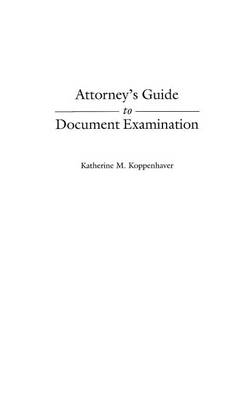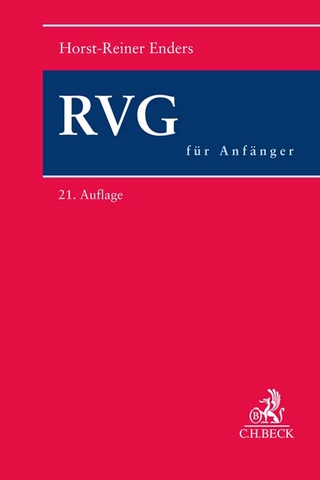
Attorney's Guide to Document Examination
Praeger Publishers Inc (Verlag)
978-1-56720-470-4 (ISBN)
When the authenticity of a document is in question in the courtroom, forensic document examiners are brought in to determine such things as whether a signature has been forged, whether the document has been altered, and whether it is all things it purports to be. The examination of suspect documents generally involves comparison with examples of known genuine writing. Attorneys need to know how to select appropriate comparison documents for forensic document examiners. This is but one of the many skills that attorneys must develop in order to benefit fully from their collaborations with forensic document examiners, and it is explained here in detail. So, too, are the basic principles of handwriting identification, the knowledge of which enables lawyers to challenge incorrect statements. This comprehensive and thorough guide for attorneys also explains what document examiners can and cannot determine based on the evidence, and it provides a thorough grounding in how to prepare for court and deposition testimony.
Among the many unique features of this attorney's guide is an extensive list of questions for lawyers to ask their own, and their opponent's, expert witnesses before going to trial. The deposition of a forensic document examiner includes questions relating to the examiner's experience, working methodology, background and education, knowledge base, certifications, achievements, and many other items relating to the examiner's abilities. Next, an extensive set of questions helps lawyers ask for the right information pertaining to the examiner's specific methods of preparation for the case at hand. After the deposition is taken, the expert must be qualified in court; this book includes 60 qualifying questions. After qualification, it is time to move on to questions about document examination and the case being litigated. Finally, new questions pertaining specifically to the cross-examination of document examiners are presented, once again relating to credentials and a given case. This valuable resource concludes with a chapter describing the relevance of various court citations involving handwriting. Appendices are devoted to suggested reading; a resource list of experts related to the field, including photographers, librarians, and appraisers; organizations; and a glossary of technical terms.
KATHERINE M. KOPPENHAVER is a Certified Document Examiner and a Diplomate of the National Association of Document Examiners (NADE), of which she is currently president./e
The Document Examiner Choosing a Forensic Document Examiner Questioned Document Cases Working with a Document Examiner Collecting and Preserving Documents Handwriting Identification The Evolution of the Written Word Handwriting Characteristics Factors that Influence Handwriting Principles of Handwriting and Handwriting Identification Documents Materials from which Documents Are Made Office Equipment Used to Generate Documents Detecting Fraud Forgery and Other Types of Fraud Detecting Fraudulant Documents Testimony Opinion, Reports, and Exhibits Preparation for Court and Deposition Deposition Testimony Presenting a Document Case Cross-Examination Court Citations Appendix Index
| Erscheint lt. Verlag | 30.12.2001 |
|---|---|
| Sprache | englisch |
| Themenwelt | Recht / Steuern ► EU / Internationales Recht |
| Recht / Steuern ► Privatrecht / Bürgerliches Recht ► Berufs-/Gebührenrecht | |
| ISBN-10 | 1-56720-470-8 / 1567204708 |
| ISBN-13 | 978-1-56720-470-4 / 9781567204704 |
| Zustand | Neuware |
| Haben Sie eine Frage zum Produkt? |
aus dem Bereich


